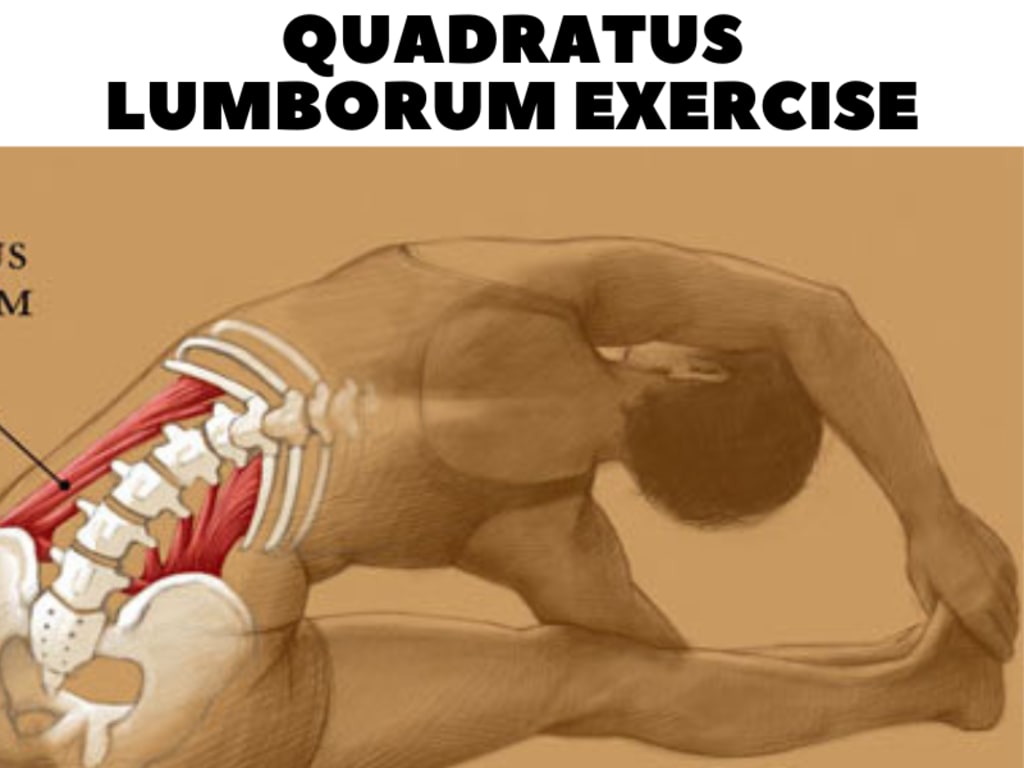Quadratus Lumborum Exercises: Strengthening Your Core for a Healthy Back
Strengthening Your Core for a Healthy Back

I. Introduction
Having a strong core is essential for overall health and well-being. One often overlooked muscle that plays a crucial role in core strength is the quadratus lumborum. In this article, we will explore the importance of the quadratus lumborum muscle, its functions, and how strengthening it can help maintain a healthy back.
II. Understanding the Quadratus Lumborum Muscle
The quadratus lumborum is a deep muscle located in the lower back. It runs from the pelvis to the lower ribs on both sides of the spine. This muscle plays a significant role in supporting the lower back and maintaining proper posture.
III. Common Problems Associated with Weak Quadratus Lumborum
When the quadratus lumborum is weak, it can lead to various issues, particularly lower back pain. The muscle's weakness can result from prolonged sitting, poor posture, or improper lifting techniques. Postural issues, such as excessive slouching or an anterior pelvic tilt, can also contribute to the strain on the quadratus lumborum.
IV. Benefits of Strengthening the Quadratus Lumborum
Strengthening the quadratus lumborum offers several benefits. Firstly, it improves posture and alignment, reducing the risk of back pain and injuries. Secondly, a strong quadratus lumborum enhances stability and balance, making everyday movements easier and safer. Lastly, by strengthening this muscle, you can prevent lower back injuries and improve overall core strength.
V. Assessing Quadratus Lumborum Strength and Flexibility
Before starting any exercise program, it's important to assess your quadratus lumborum strength and flexibility. Several tests and self-assessments can help you understand your baseline and set appropriate goals. These assessments may include simple movements like side-bending and rotation to gauge your range of motion and muscle strength.
VI. Quadratus Lumborum Exercises: Strengthening Techniques
To strengthen the quadratus lumborum effectively, it's crucial to incorporate a variety of exercises into your fitness routine. Here are some techniques you can try:
A. Isometric Exercises
Quadratus lumborum plank variations: Planks with a focus on engaging the muscle can effectively strengthen the quadratus lumborum.
Side planks with a focus on the muscle: By consciously engaging the quadratus lumborum during side planks, you can target and strengthen it.
Wall leans and lateral holds: These exercises involve leaning against a wall or holding a lateral position to engage and strengthen the quadratus lumborum.
B. Dynamic Strengthening Exercises
Quadratus lumborum lifts: This exercise involves lifting and lowering the hip on one side while maintaining proper form and engaging the muscle.
Side-bending exercises with resistance bands: Using resistance bands can add resistance to side-bending exercises, further challenging the quadratus lumborum.
Russian twists and seated twists: These exercises engage the core muscles, including the quadratus lumborum, to improve strength and stability.
C. Stretching and Flexibility Exercises
Standing side stretches: Stretching the quadratus lumborum by leaning to the side can help improve flexibility.
Seated forward bends with a twist: This exercise combines forward bending with a twist to stretch and strengthen the quadratus lumborum.
Quadratus lumborum foam rolling techniques: Foam rolling can help release tension and increase blood flow to the quadratus lumborum, promoting flexibility and recovery.
VII. Incorporating Quadratus Lumborum Exercises into Your Fitness Routine
To maximize the benefits, it's important to consider the frequency, duration, and intensity of quadratus lumborum exercises. Aim for at least two to three sessions per week, allowing adequate rest and recovery between workouts. You can combine these exercises with other core workouts to create a comprehensive routine.
VIII. Modifications and Progressions
It's essential to adjust exercises based on your fitness level and gradually increase the difficulty and resistance over time. Beginners should start with basic variations and gradually progress to more challenging exercises. This approach ensures the safe and effective strengthening of the quadratus lumborum.
IX. Tips for Proper Form and Technique
To maximize the effectiveness of quadratus lumborum exercises, keep the following pointers in mind:
- Maintain proper alignment and posture throughout each exercise.
- Engage the quadratus lumborum by consciously contracting the muscle.
- Avoid common mistakes like arching the lower back or relying on momentum.
- Focus on controlled movements and avoid excessive strain or jerky motions.
>>> Read more
X. Quadratus Lumborum-Friendly Lifestyle Habits
In addition to exercise, certain lifestyle habits can support a healthy quadratus lumborum and overall back health:
- Practice good ergonomics and maintain proper posture while sitting and standing.
- Incorporate movement throughout the day, avoiding prolonged periods of sitting or inactivity.
- Take breaks and perform stretches to relieve tension in the lower back and quadratus lumborum.
XI. Addressing Common Concerns and Precautions
Individuals with existing back conditions should take extra precautions when engaging in quadratus lumborum exercises. It's important to consult with a healthcare professional before starting an exercise program, especially if you have a history of back pain or injuries. They can provide personalized advice and recommend specific exercises suitable for your condition.
XII. Summary and Key Takeaways
In summary, the quadratus lumborum muscle plays a crucial role in core strength and overall back health. By incorporating targeted exercises into your fitness routine, you can strengthen this muscle, improve posture, enhance stability, and prevent lower back injuries. Remember to focus on proper form, gradually progress, and consult a healthcare professional if you have any concerns.
XIII. Frequently Asked Questions (FAQs)
What are some alternative names for the quadratus lumborum muscle?
The quadratus lumborum muscle is also known as the QL muscle or the square muscle of the loins.
Can weak quadratus lumborum cause pain in other areas of the body?
Yes, weak quadratus lumborum muscles can contribute to pain and discomfort in the lower back, hips, and even down the legs.
How often should I perform quadratus lumborum exercises?
It's recommended to perform quadratus lumborum exercises two to three times per week for optimal results.
Are there any specific warm-up exercises recommended for these workouts?
Prior to quadratus lumborum exercises, it's beneficial to perform dynamic warm-up exercises that involve gentle movements and stretches for the entire body.
Can pregnant women safely engage in quadratus lumborum exercises?
Pregnant women should consult with their healthcare provider before starting any exercise program, including quadratus lumborum exercises, to ensure safety and suitability for their specific condition.
About the Creator
VitalityVibe
Welcome to VitalityVibe, your ultimate resource for unlocking your health potential and embracing a vibrant life. Our platform is designed to inspire and guide you on your journey to holistic well-being.






Comments
There are no comments for this story
Be the first to respond and start the conversation.